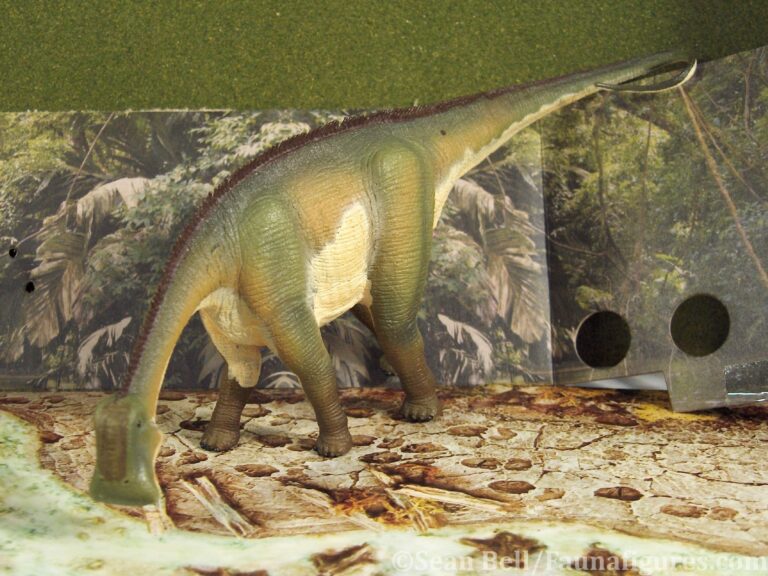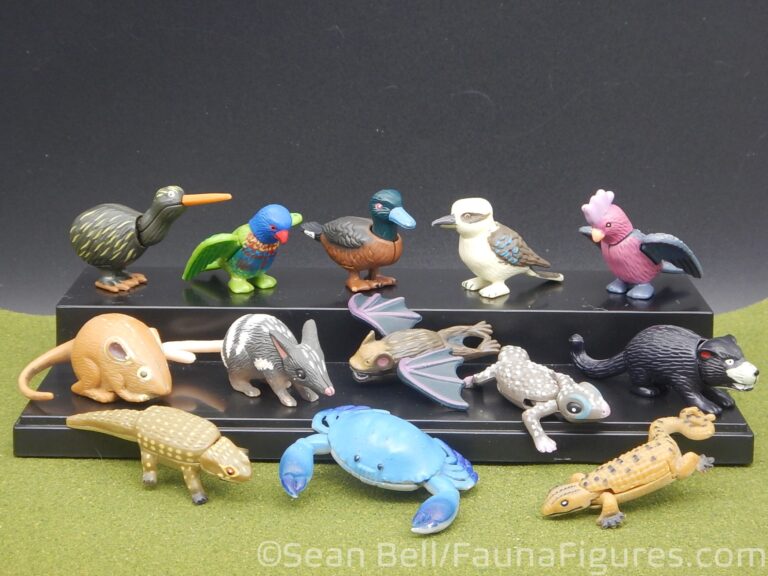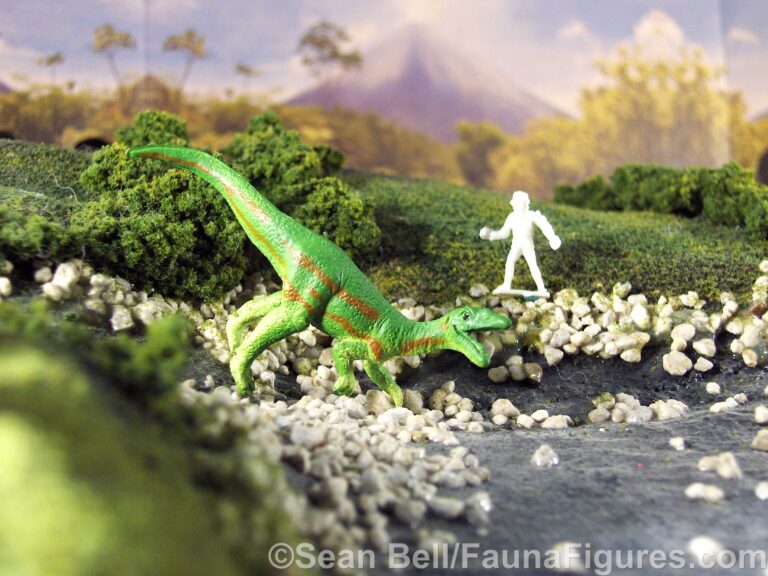What’s going on here? Well, some figures don’t really need a full review. Especially small bin or toob sets. And yes, I have discussed individual small figures from sets before but it can’t hurt to shake things up a bit. So for this one, and others in the future (should have done it for the Safari Dino Skulls toob one, for example, instead of just one figure). But I’ll get to shake it up a bit, and do lots of photos!
What is it? This will be the Safari Ancient Fossils toob, a set of 10 figures that are completely out of scale with each other. Representing a variety of fossils that, in many cases, would have been better as regular figures. At least to me! The toob is item number 684804, and first came out in 2009. And they’re still available. I don’t think they’ve even been repainted or anything. I don’t display them–I don’t have room, and they are kind of awkward for that.
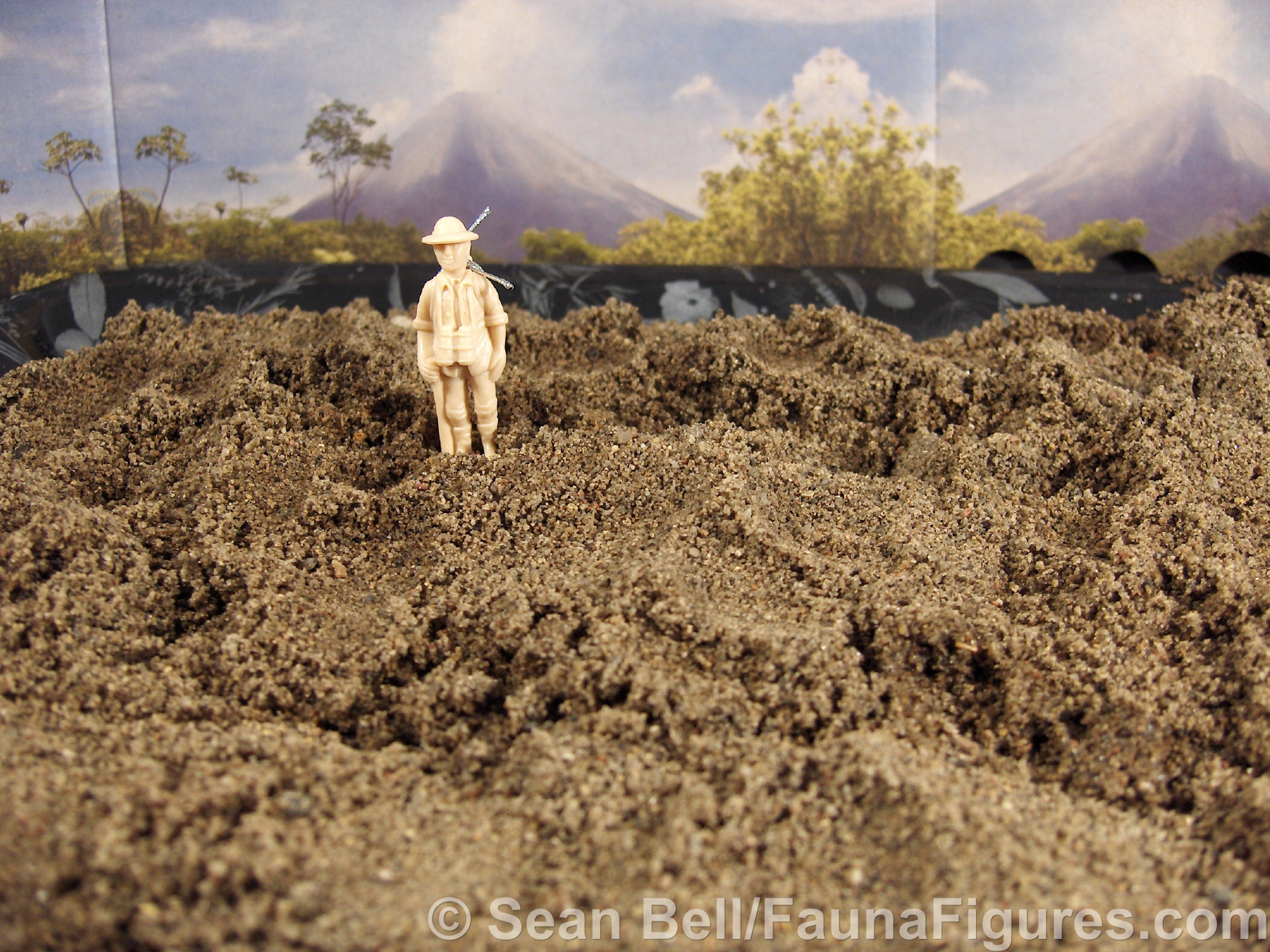
Any story behind it? Actually, I have fond memories of this one. When I ran the dino museum this set was fantastic–we used them in plaster molds and let kids (and ‘kids’) dig them out just like a real Paleontologist! With one exception (I’ll reveal below) they were pretty popular with kids.
Now to run through the figures! Each will be accompanied with a small discussion.
Eopelobates
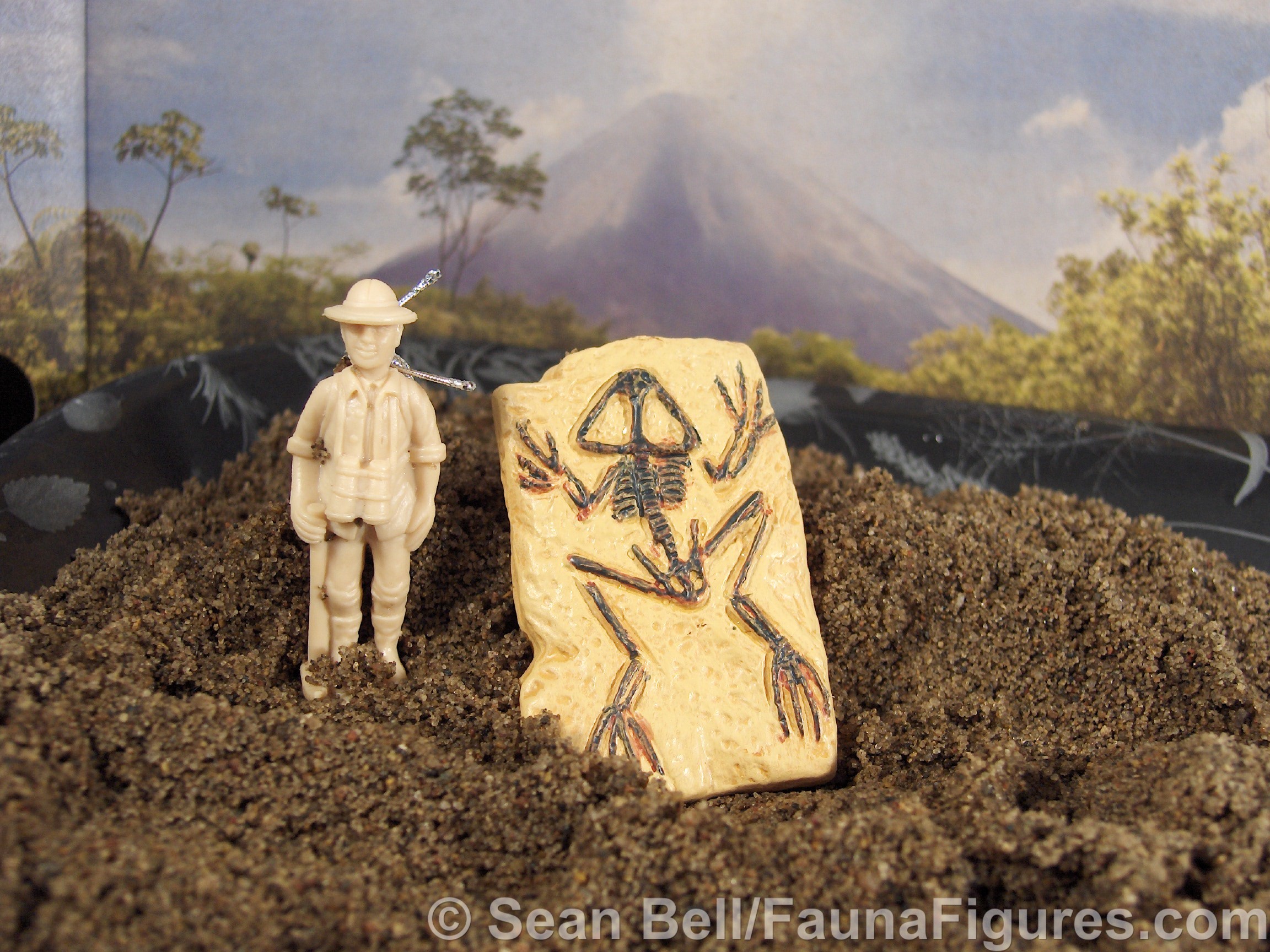
Here we have the first one, a fossil of the early frog Eopelobates. It is almost exactly to scale with the real fossil, at about 2.5cm snout-vent. It’s okay as a figure, at the very least it is recognizable as a fossil frog. One interesting thing about this set, all of the fossil organisms were identified to their genus (on their toob inserts), something that would be great to see Safari do with every one of their figures. Also like the other figures in the set, the fossil is laying in a base of sedimentary matrix.
Mixopterus
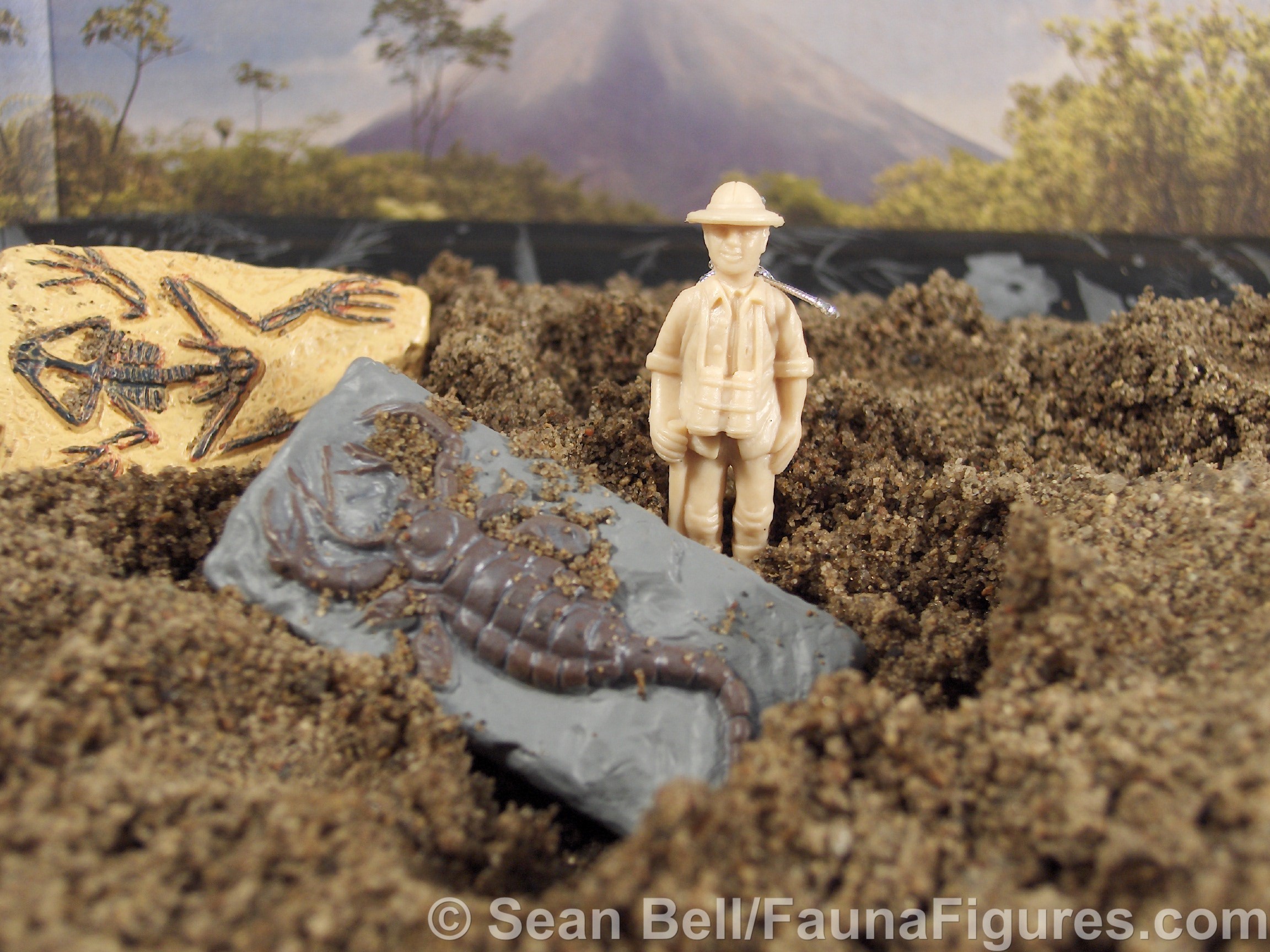
Next up, a Mixopterus fossil, representing one of the many eurytpterids. This is the first version of this kind of animal by Safari. Like the previous Eopelobates, it is a fossil placed upon a bed of matrix–but being an invertebrate, it could almost pass for a living version of the animal. Maybe with just a bit of highlighting paint and some detailing. At about 6cm long, this figure is about 1:17. It would work well for dioramas!
Velociraptor claw
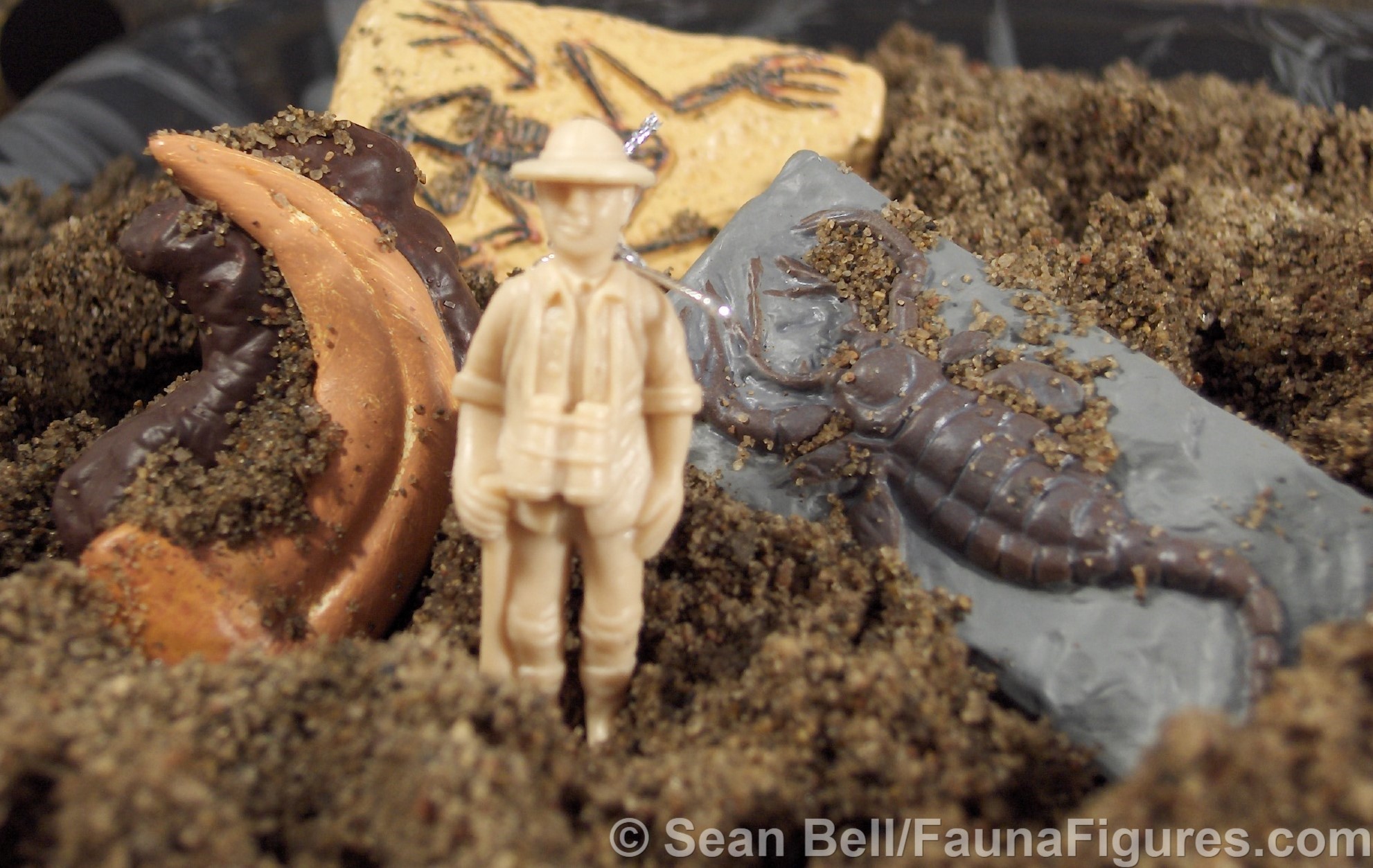
This is the first representative fossil of just a piece of an animal–as a given, it would be pretty hard to fit a whole dinosaur fossil within the context of this toob. This one is a Velociraptor claw, because of course it is. It’s about 5 cm long, so it’s a little bigger than 1:2 to scale. It’s also a little heavy, and seems to lack the full point of a real claw. It does look fairly close to real maniraptoran claws, if not a Velociraptor. It even has the furrow down the side.
Dinosaur footprint
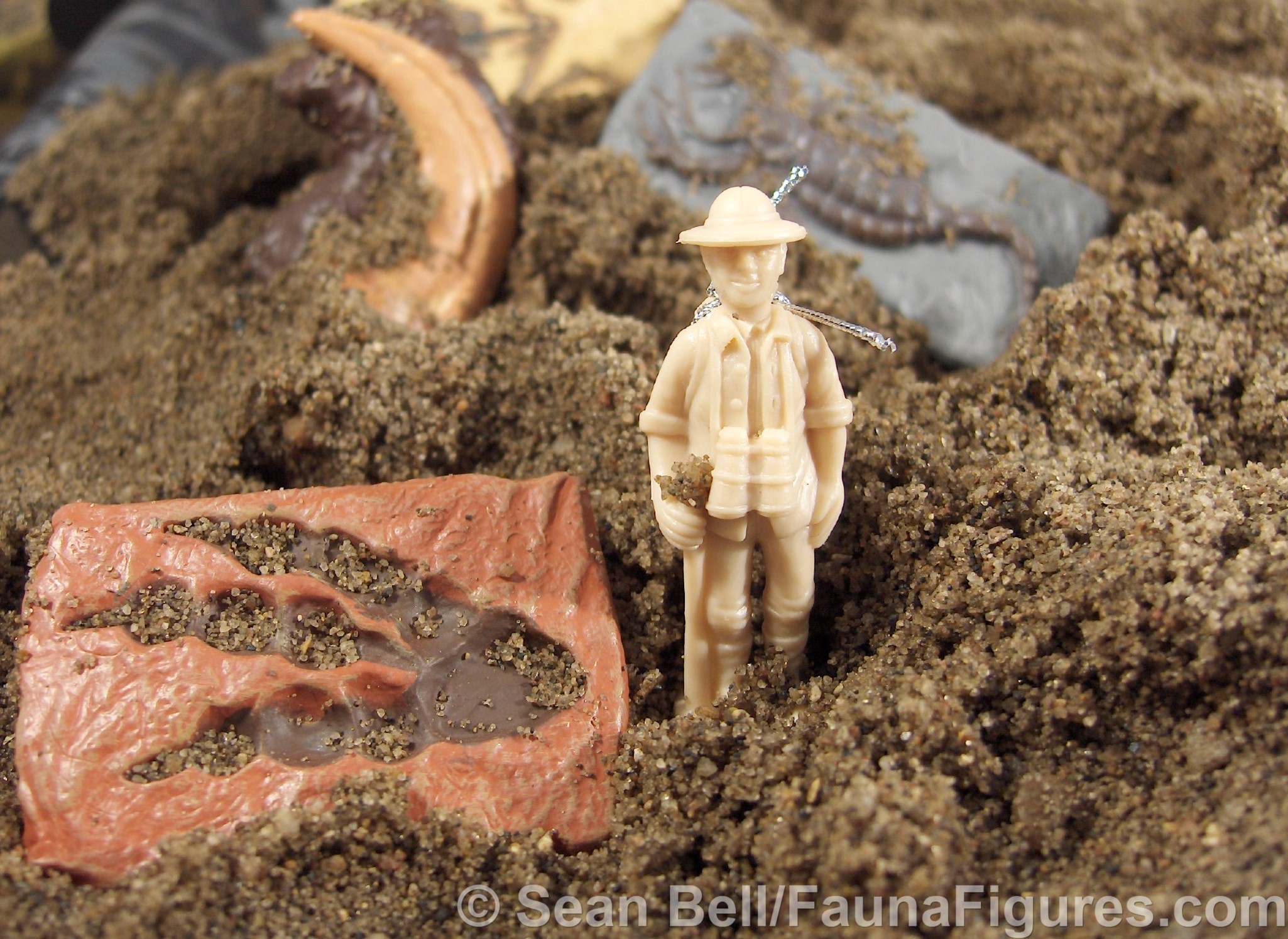
Here’s one of those ones that’s…less exciting. A theropod footprint of…some kind. It is kind of similar to a tyrannosaur footprint that was found, it was about 74cm long, so that would make this one about 1:7 scale; most likely the fossil was a smaller specimen or smaller species. It’s fine, if a little too defined in each bone; many footprints I’ve seen are more blobby.
Diplomystus

This Diplomystus is one of Safari’s first prehistoric fish…and it’s too bad that it’s a lateral skeleton. Like the frog, it seems okay, if it’s a little compressed. Like the frog, it wouldn’t be able to stand alone as an ‘animal’, if only because it would have to lie on its side! It’s nearly 5cm, so it would be around 1:1.5 scale.
Tyrannosaurus tooth
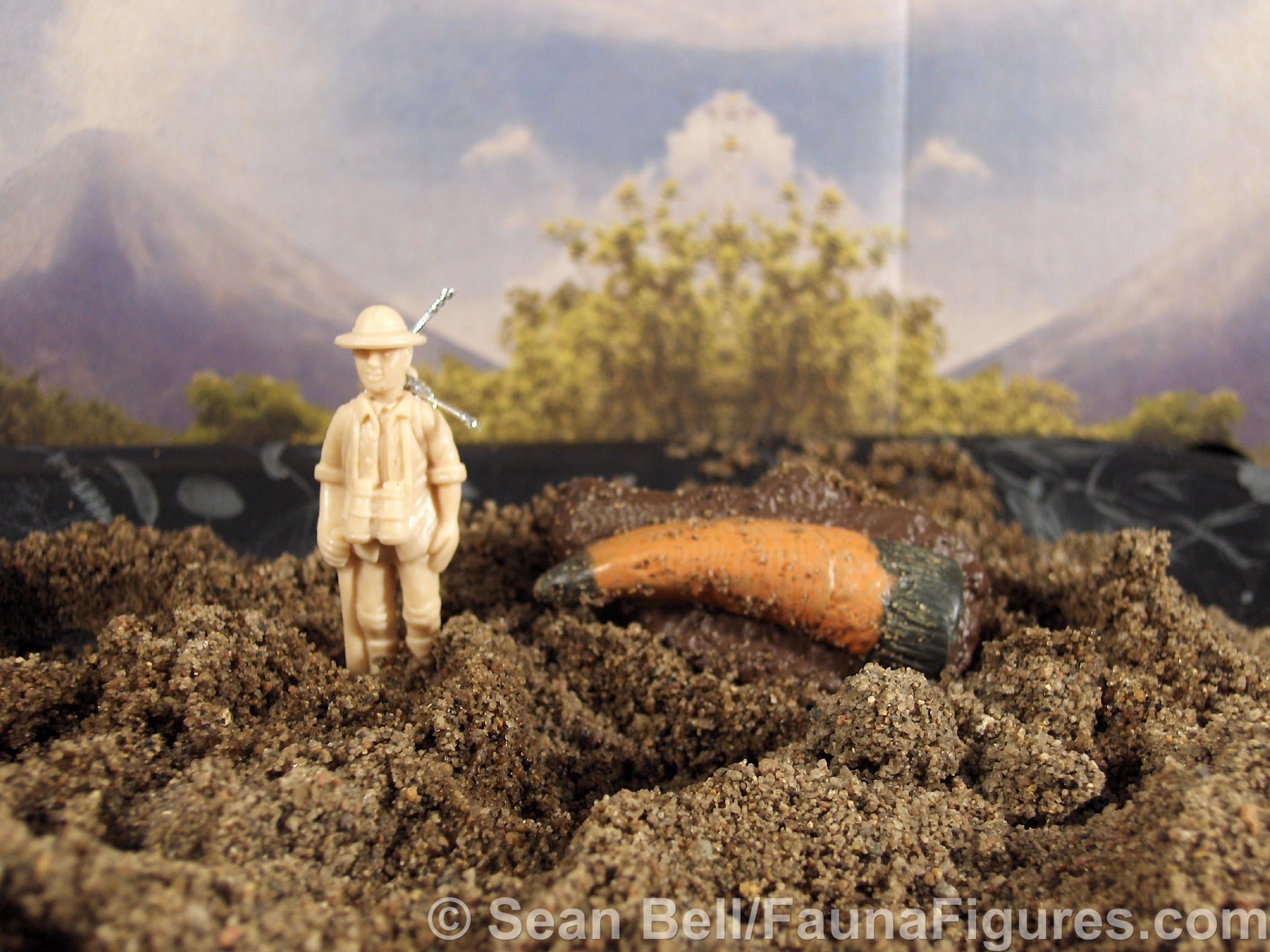
This is one that makes me go “ugh”. It’s supposed to be a tyrannosaur tooth. It just doesn’t look like any tyrannosaur tooth I’ve seen. For one, it’s too conical–Tyrannosaurus teeth have more of a U-shape, depending on where in the mouth it sits (I have several replicas of actual T. rex teeth). There’s also no serrations, and the root looks weird. But if you’re a kid digging it out of a plaster cast, this one is particularly exciting. It’s difficult to tell the scale, because it doesn’t look like any tooth in the mouth, but assuming about 30cm for a real tooth, this figure is about 1:7 scale.
Pulalias
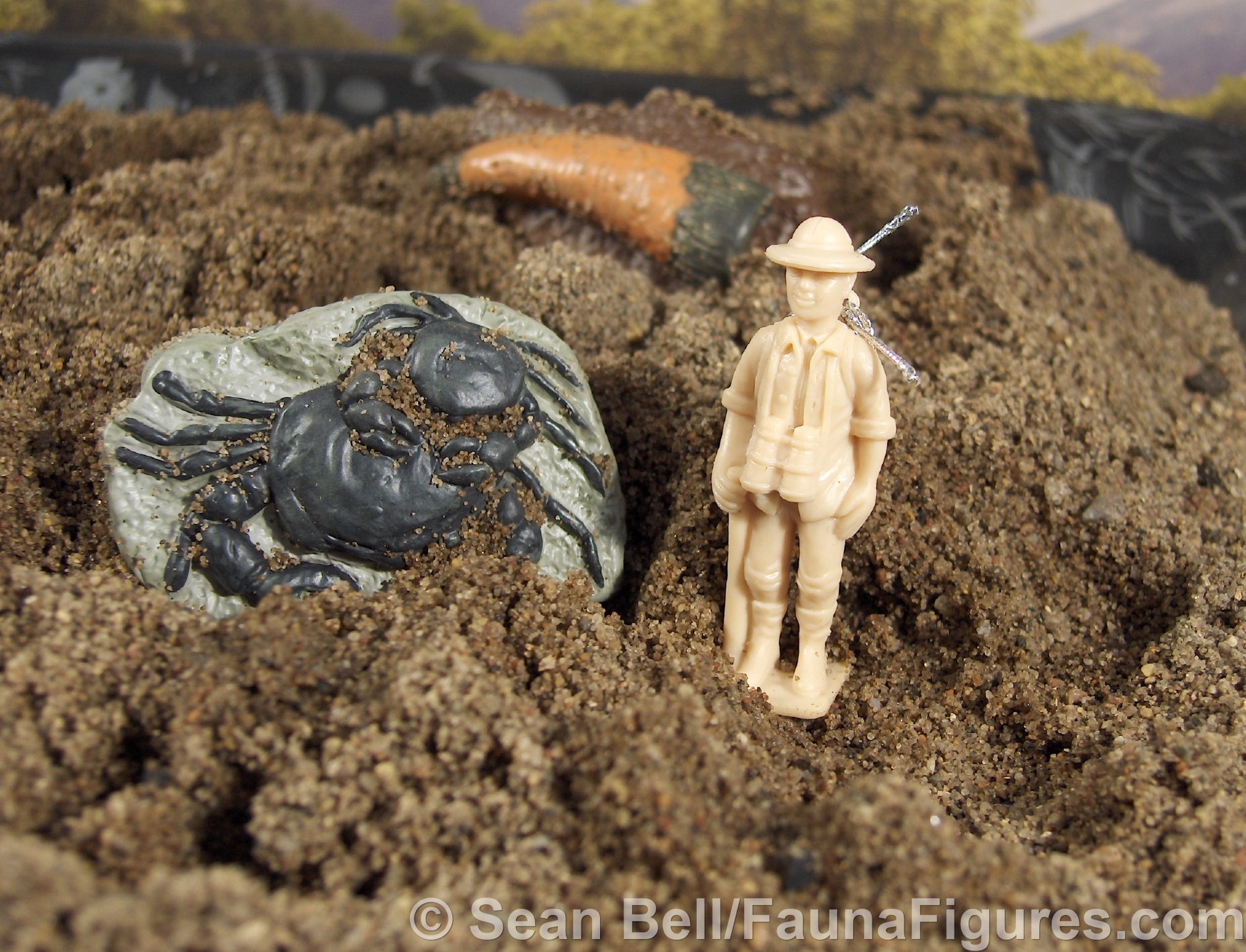
This is Pulalias, a fossil crab. Like the Mixopterus, it could just as easily be a living animal with a little paint. This figure is about 1:2 scale. Not much more to say, but it’s funny that Safari names this as a ‘giant fossil crab’ on their site, when they’re not that big.
Peltoceratoides
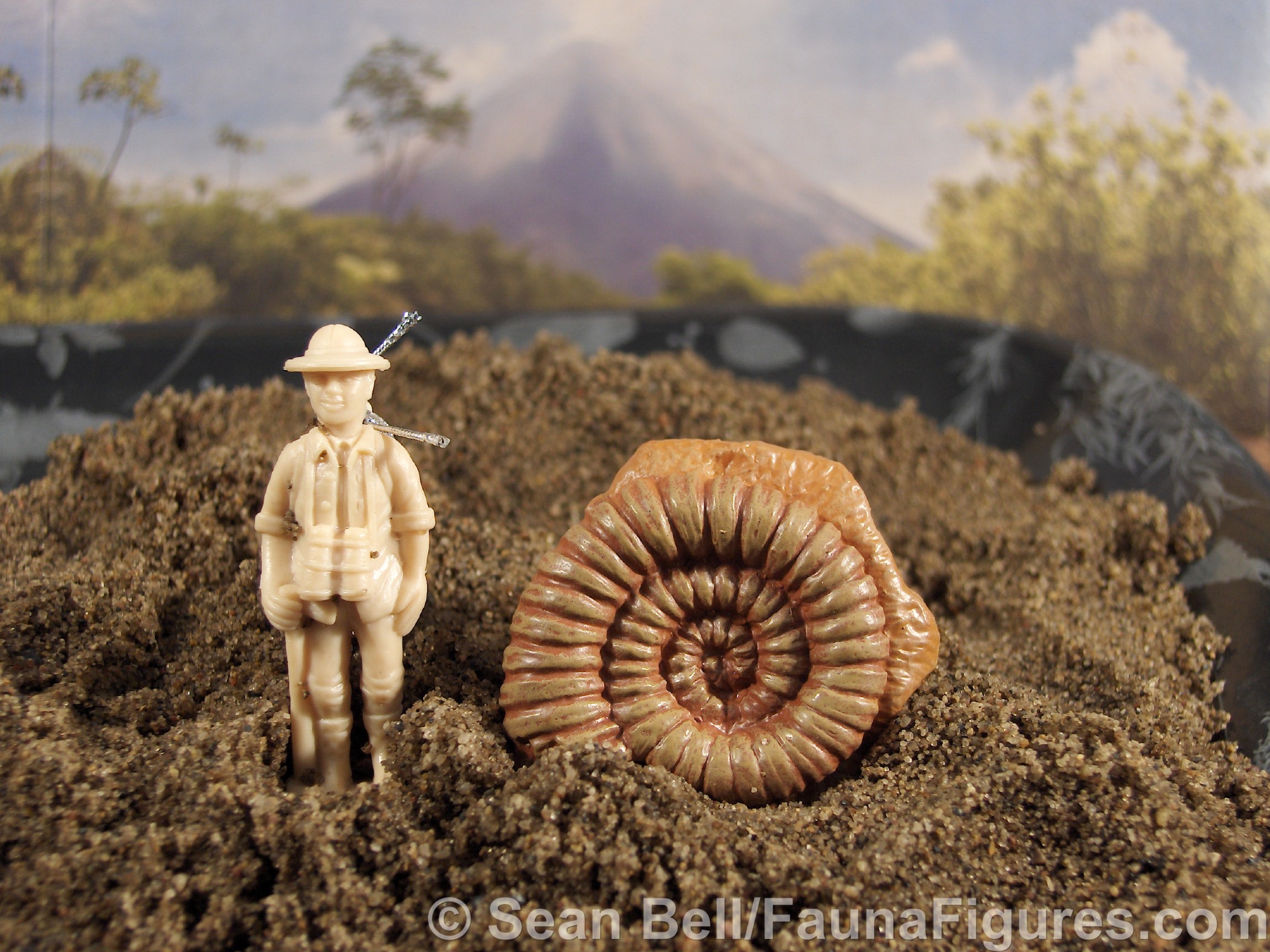
Another invertebrate fossil, but like teeth and footprints, this one couldn’t pass for a living animal! It’s an ammonite, Peltoceratoides. Unlike many of the fossils, coiled ammonite fossils are pretty familiar. It’s not a large species; this figure is about 1:1.5 as it is around 4cm in diameter. Eventually Safari would make a full life figure of an ammonite, but a different species.
Raymondites

Here’s another invertebrate that could pass for a ‘real’ animal, the trilobite Raymondites. It’s roughly to scale with the real animal. Eventually, Safari would make an over-sized version of this figure as part of a carded set of a few of the fossils. It’s neat to have, but again, with a little work it might represent a real animal–just needs some legs. As with the ammonite, eventually Safari would make an actual trilobite figure, this time with their Cambrian toob,
Dinosaur skin
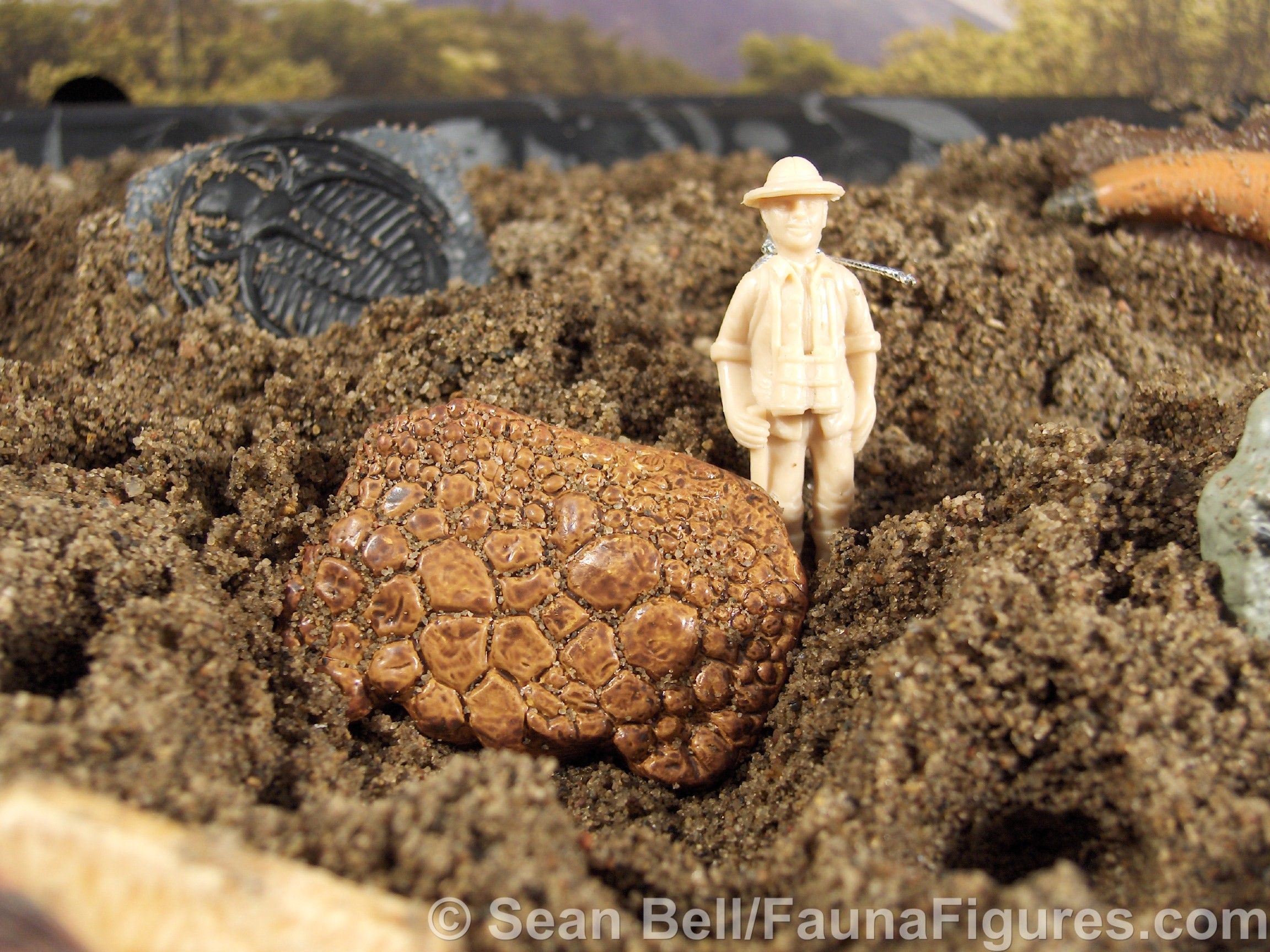
And finally…the most disappointing one. It’s interesting as an educational tool, dino skin impressions are really important and cool. As a toy…let’s just say that we had to provide a little something extra when kids dug this one out. It’s kind of boring. Eventually, we just left them out of the plaster jackets altogether. It’s hard to judge species…or size…but it looks most like some hadrosaur skin fossils; based on one of the larger scutes, the skin is representative of about 1:1 scale. Otherwise, there’s not much more to say about it.
Final thoughts and would I recommend it? As a concept, it’s a neat series. It does a good job of reminding kids that the toys of prehistoric animals are based of fossils that are less complete. As toys, they probably don’t provide much directly–but as I’ve mentioned, they’re great for dig out models–either in plaster jackets or sandboxes! Overall the most interesting ones are the full-body fossils as opposed to the pieces of skeletons–but claws and teeth are more likely to intrigue. For those, toy replicas are relatively easy to come by. And at least, unlike real fossils, kids can play with these all they want. And if someone gets motivated to paint up a few of them into ‘live’ animals, that would work too, they aren’t expensive for customizing projects!



